HOW TO HYBRID
- PostedPublished 3 December 2016
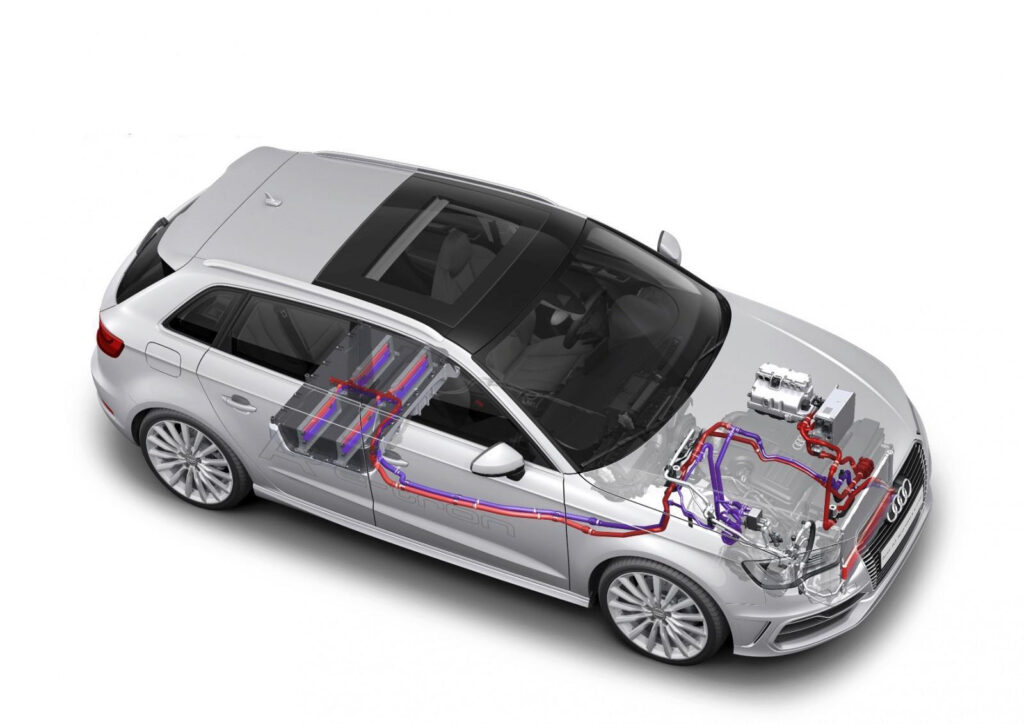
THE first hybrid cars built from 1997 to 2003 shared all the same AC and heat transfer systems that a typical petrol motor vehicle used. The early hybrids were the Honda Insight, Civic Hybrid, Ford Escape, and Prius (2001-2003). In Japan the Prius went on sale in 1997 as a Model Year (M/Y) 1998. All hybrid AC systems are really climate control. Only the Insight had AC as an option. Every other hybrid to date has factory climate control for some very important reasons.
The heat transfer systems are extremely important in a hybrid car or plug-in. Many have two liquid cooling systems, one for the internal combustion engine (ICE) and one more liquid system for high-voltage (HV) components and high-voltage electric motors. The Chevy (Holden) Volt as three systems. One more for the high-voltage battery.
On the AC side of things, some inputs that all hybrid systems look at are AC request (temperature desired), temperature both inside and outside the vehicle, sunlight, HV battery temperature, intake air at HV battery intake duct, (HV) battery state of charge (SOC) and more.

On earlier hybrids, when the correct conditions were met at idle, the hybrid computer would shut down the ICE and continue to run in economy mode (AC compressor off) or keep the ICE on and AC at maximum.
As hybrids have developed, improvements over the belt-driven Honda, Ford, and early Toyota Prius AC systems have been introduced. In the older systems it was required that the ICE stays running under Max AC conditions. Having the ICE off equals better fuel economy and lower tailpipe emissions, so changes were in order.
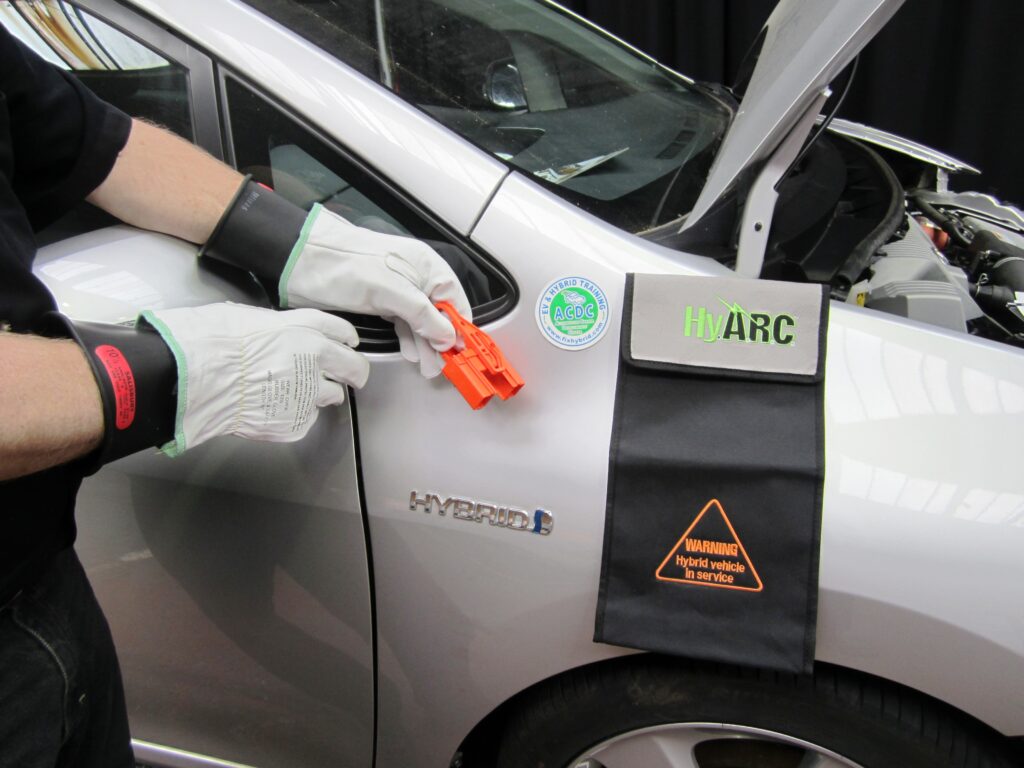
A note about high-voltage safety; make sure you have Class 0 1000-volt rubber safety gloves (pictured below left) and a CAT III rated DVOM (pictured above) with leads before you get into any part of the car with orange-coluored parts. You should get hands-on safety training using the gloves and meter before attempting any HV repairs. The gloves should be used with leather protectors (pictured below centre).
The Prius was redesigned for the 2004 model year. One look under the bonnet would have you wondering about the AC compressor. Gone was the drive belt, and added was an orange cable that snuck into the case of the compressor.
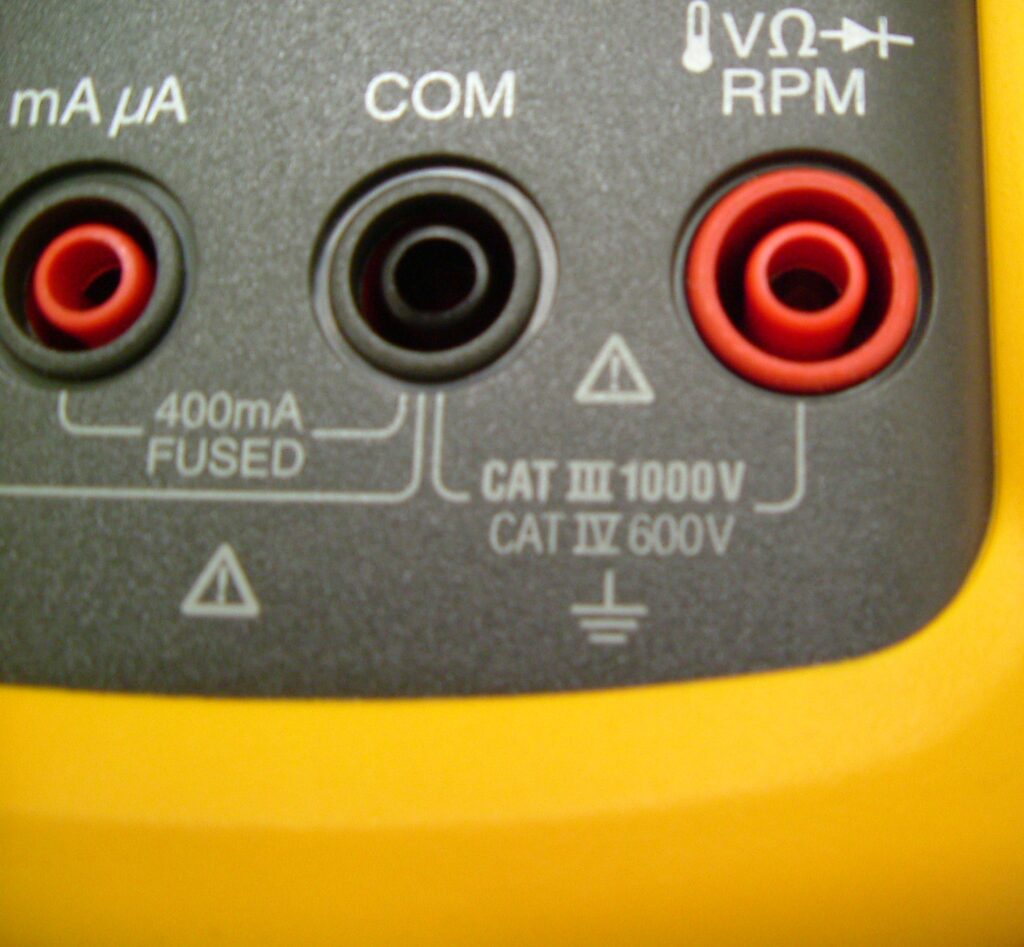
You also won’t see two radiators like a Ford Escape Hybrid Electric Vehicle (HEV) (pictured above) or a 2001 – 2003 Prius. What was going on here? The two radiators are now housed in one unit with two separate chambers. The compressor (pictured opposite page, top left) was a new Denso design that required high voltage to operate.
This AC system compressor runs on 200 volts ac (not to be confused with AC = Air Conditioning and ac = alternating current). In order for this new style compressor to operate it requires a high-voltage source (the new Prius had that) and a computer system tied into the climate control that signals the 200-volt power inverter to change the 200-volt direct current (dc) to 200-volt three-phase ac. So far so good.
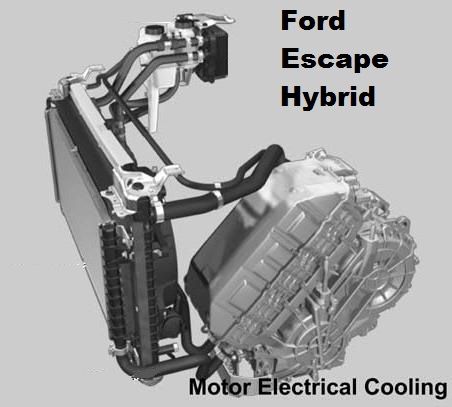
In ACDC’s, (not to be confused with ac dc, ACDC is my training company, the Automotive Career Development Center! OK, way too many ac, AC, dc, ACDC, I sure hope you are following this) 2004 Prius I have logged about 322,000 kilometres. In the summer heat with the AC on maximum and the car stopped, the ICE will stay off for about eight minutes.
During this time the HV battery pack is being depleted. When two bars of juice show on the dash display, the ICE will automatically restart and a generator in the transaxle will perform a fast charge for about three minutes before the ICE shuts down again.
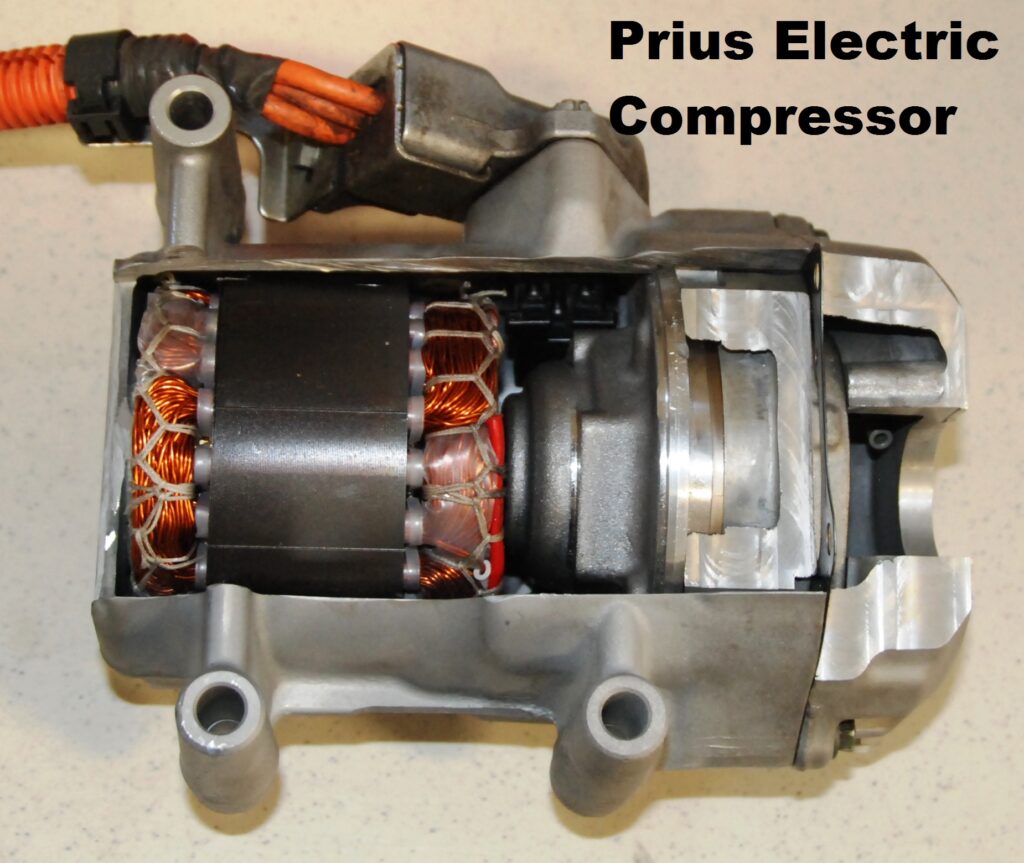
This repeats over and over. HV compressors are the norm on all hybrids and plug-in cars from all OEMs today.
Recharging the system with refrigerant is the same as conventional AC, but special oil is required (label pictured below).
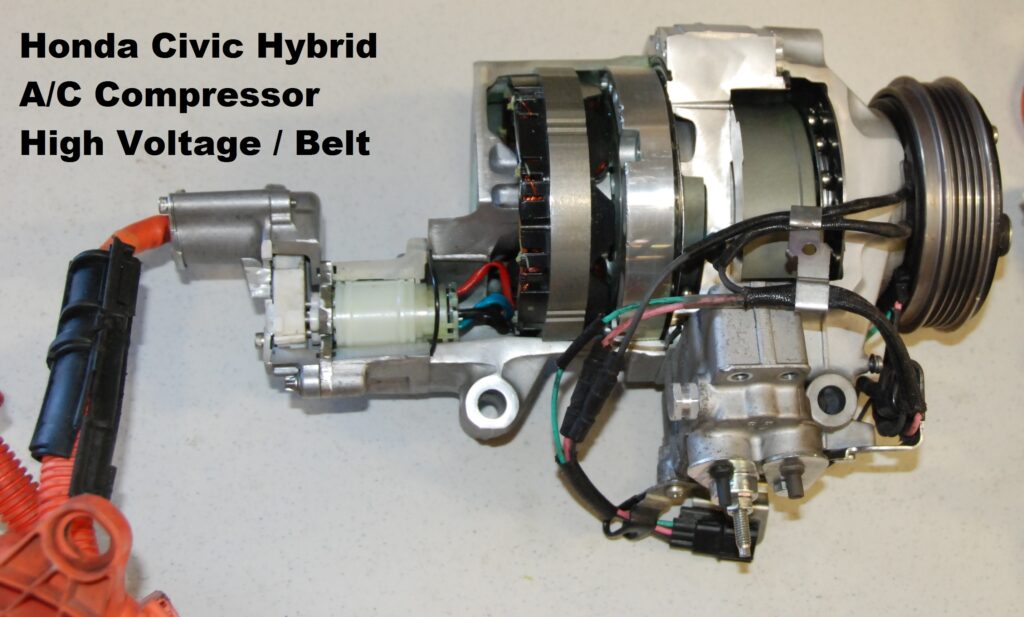
For more information about the oil issue go to www.fixhybrid.com/comp-oil/ and read an article about what ACDC is doing to help independent shops.
Honda, not to be outdone by their arch-rival Toyota, has equipped the 2014 Accord hybrid with an all-electric compressor. The Civic HEV (2006–2015) had a hybrid compressor (pictured above right), not because it was fitted to a hybrid but because it used high-voltage on one end and a belt on the other with two scrolls. Therefore it is a hybrid by my definition. A hybrid car has two power supplies to create motion.
This hybrid compressor has about 85 per cent of its refrigerant cycling through the belt-driven portion of the compressor while the electric drive has its own scroll and delivers the remaining 15 per cent.
During most, but not all maximum requests, the smaller electric portion can keep occupants cool enough for the ICE to shut down during idle stop.
As you know one way to reduce fuel consumption is to turn off the ICE when not required. The two scrolls can also work together to provide maximum cooling on really hot days.

The AC system in a Ford Escape Hybrid (USA Model) uses an off-the-shelf evaporator to cool the high-voltage nickel metal hydride (NiMH) batteries located under the rear deck floor. This system monitors the HV battery and turns on the AC as necessary. Only the rear AC will operate, but because the Ford still uses a belt, the ICE will start to keep the HV battery module cool. The Lexus LS 600h also uses its own evaporator to cool the HV battery pack directly.
Most other hybrids use the AC indirectly to cool the NiMH batteries by grabbing air from the cabin and with air ducts while a fan draws the cooler air over the NiMH cells, venting the warmer air outside.
This keeps the HV battery’s temperature within a safe operating range.
Maintenance required to keep the climate control systems operating efficiently in hybrid vehicles are the same as the normal cars you see everyday.
Good news for AC shops. Now it is more than sweat we are worried about, it is NiMH or Lithium-ion battery life.
So as you can see, hybrid, plug–in and electric cars will require more training, some safety gloves and possibly a new meter if you want to be ready to service and repair the new crop of fuel-efficient vehicles. Get ready as there are already over 12 million on the world’s highways.
- CategoriesIn SightGlass
- TagsSightGlass News Issue 8

